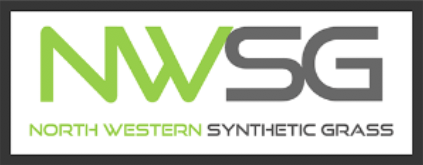In recent years, synthetic grass has become increasingly popular in landscape design. From residential lawns to commercial sports fields, synthetic grass offers a low-maintenance and cost-effective alternative to natural grass. But what exactly is synthetic grass, and how can it be used in landscape design? Read on.
What Is Synthetic Grass?
Synthetic grass, also known as artificial turf, is a surface made from synthetic fibres that mimic the look and feel of natural grass. It is typically made from materials such as nylon, polyethylene, or polypropylene and is designed to be durable and long-lasting. Synthetic grass can be used in a variety of applications, from residential lawns and landscaping to commercial sports fields and playgrounds.
Benefits of Synthetic Grass
There are many benefits to using synthetic grass in landscape design. Some of the most notable benefits include:
Low-maintenance: Synthetic grass requires very little maintenance compared to natural grass. It does not need to be watered, mowed, or fertilized, which can save homeowners and business owners time and money.
Cost-effective: While the initial cost of installing synthetic grass may be higher than natural grass, it can be a cost-effective solution in the long run. With little to no maintenance required, the cost of synthetic grass can be recouped over time.
Environmentally friendly: Synthetic grass does not require pesticides or fertilizers, which can be harmful to the environment. It also does not require watering, which can help conserve water.
Durable: Synthetic grass is designed to be durable and long-lasting, making it an ideal choice for high-traffic areas such as sports fields and playgrounds.
Uses of Synthetic Grass in Landscape Design
Synthetic grass can be used in a variety of applications in landscape design. Here are some of the most common uses of synthetic grass:
Residential lawns: Synthetic grass can be used to create a low-maintenance, visually appealing yard for homeowners. It can also be used in areas where natural grass is difficult to grow, such as shaded areas or areas with poor soil quality.
Commercial landscaping: Synthetic grass can be used in commercial landscaping to create visually appealing outdoor spaces without the maintenance requirements of natural grass.
Sports fields: Synthetic grass is a popular choice for sports fields, as it can withstand heavy use and does not require watering or mowing.
Playgrounds: Synthetic grass can be used in playgrounds to create a safe and durable surface for children to play on.
Golf courses: Synthetic grass can be used on golf courses to create a consistent, low-maintenance putting surface.
Installation and Maintenance of Synthetic Grass
Installing synthetic grass requires specialized equipment and skills and should be done by a professional. The installation process typically involves removing existing grass and soil, installing a base layer, and then laying the synthetic grass on top. The process can take anywhere from a few days to a few weeks, depending on the size of the area.
Once installed, synthetic grass requires very little maintenance. It should be brushed regularly to prevent matting, and any debris should be removed promptly. Synthetic grass can also be washed with water to remove any dirt or stains.
Conclusion
Synthetic grass offers many benefits for landscape design, from low-maintenance to cost-effectiveness and durability. It can be used in a variety of applications, from residential lawns to commercial sports fields and playgrounds. If you're considering synthetic grass for your landscape design project, be sure to work with a professional to ensure a high-quality installation and long-lasting results.
When it comes to residential synthetic grass, trust North Western Synthetic Grass. We offer premium quality artificial grass installation services for residents in Vancouver, Burnaby, Surrey, Langley and throughout the Fraser Valley. Book online!







